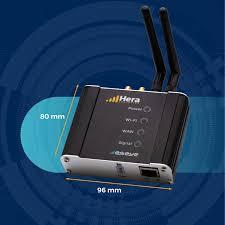IoT Modem: The Heart of Smart Connectivity

Introduction
In today’s hyper-connected world, the Internet of Things (IoT) is transforming industries by linking billions of devices globally. At the core of this ecosystem lies a powerful yet often overlooked component — the iot modem. It serves as the bridge that connects devices, sensors, and systems to the internet, enabling seamless communication and data exchange.
What Is an IoT Modem?
An IoT modem is a specialized communication device that enables machine-to-machine (M2M) or device-to-cloud connectivity. Unlike traditional modems, which primarily support human-to-internet communication (like browsing or streaming), IoT modems are built for continuous, automated data transmission between smart devices and platforms.
These modems use various network technologies such as LTE, NB-IoT, Cat-M1, 5G, and even satellite connections, depending on the application and environment.
How Does an IoT Modem Work?
An IoT modem functions as a translator between connected devices and the internet. It:
-
Receives data from sensors or devices.
-
Encodes and transmits this data over a cellular or wireless network.
-
Communicates with cloud servers or gateways, enabling real-time monitoring and control.
-
Receives remote commands, which are then executed by the device or system.
This bi-directional communication ensures that every IoT device stays synchronized, monitored, and updated.
Types of IoT Modems
1. Cellular IoT Modems
These modems use 4G LTE, 5G, or NB-IoT networks to provide wide-area connectivity. Ideal for mobile or remote applications like smart vehicles, logistics tracking, or industrial monitoring.
2. Wi-Fi and Bluetooth Modems
Best suited for short-range IoT systems such as smart homes, wearables, and office automation.
3. Satellite IoT Modems
Used in areas without cellular coverage—like offshore rigs or remote agricultural zones—offering global communication through satellite links.
4. Ethernet and Industrial Modems
Designed for factories or utilities that need stable, wired connections for automation and machine control.
Key Features of a Modern IoT Modem
-
Low Power Consumption – Essential for battery-operated cellular modem devices.
-
Secure Data Transmission – Encryption and authentication protocols prevent cyber threats.
-
Remote Management – Enables firmware updates and device control from anywhere.
-
High Scalability – Supports a large number of connected devices simultaneously.
-
Rugged Design – Withstands harsh environmental conditions for industrial applications.
Applications of IoT Modems
IoT modems play a critical role in numerous sectors:
-
Smart Cities: Traffic monitoring, smart lighting, and waste management systems.
-
Healthcare: Remote patient monitoring and telemedicine devices.
-
Agriculture: Precision farming and livestock tracking.
-
Transportation & Logistics: Fleet management, GPS tracking, and asset monitoring.
-
Energy & Utilities: Smart grids and predictive maintenance systems.
Why an IoT Modem Is Vital for Your Business
Choosing the right IoT modem ensures reliable connectivity, cost efficiency, and scalability. Businesses leveraging IoT modems gain real-time insights, improve operational efficiency, and unlock new service opportunities through automation and analytics.
Future of IoT Modems
As 5G and edge computing advance, IoT modems will become faster, smarter, and more energy-efficient. Future designs will integrate AI-driven connectivity management to optimize bandwidth and reduce latency—making IoT ecosystems more intelligent and autonomous than ever.
Conclusion
The IoT modem is more than just a communication tool—it’s the foundation of a connected world. Whether you’re powering industrial machines, managing fleets, or building a smart city, selecting the right IoT modem ensures that your network remains reliable, secure, and future-ready.
For the Information: Click Here
- Art
- Crafts
- Drinks
- Fitness
- Food
- Παιχνίδια
- Health
- Κεντρική Σελίδα
- Literature
- Music
- Networking
- Finance
- άλλο
- Hotels
- Shopping
- Sports
- Wellness


